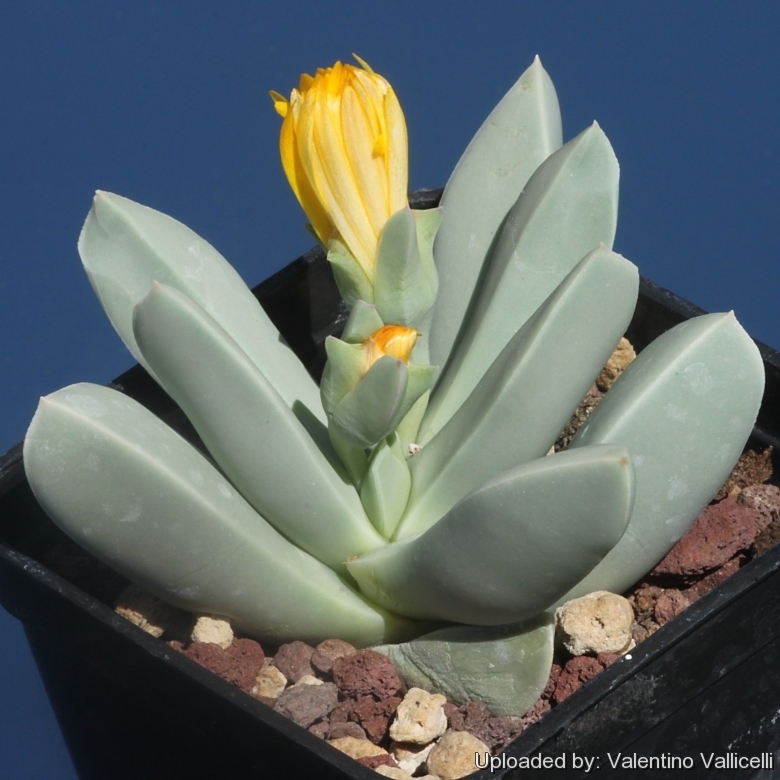
Schwantesia acutipetala Photo by: Valentino Vallicelli
Origin and Habitat: South Africa, Cape-Province: Little Namaqualand, Richtersveld.
Synonyms:
Description: Leaves: Smooth, bluish-green, narrow and fleshy, tapering sharply. Upper surface flat, lower surface keeled, rounded near base and sharply tapering towards apex.
The margins are pronounced sometimes tinged reddish.
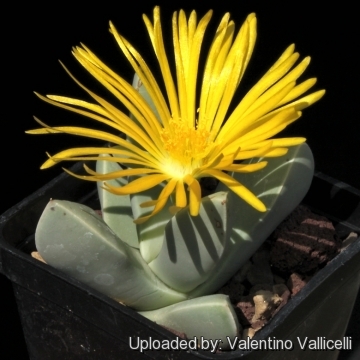 - SB808 (Collector: Steven Brack) Locality: Cone Peak, Richtersveld, Little Namaqualand, North-West Cape Province, South Africa Photo by: Valentino Vallicelli
- SB808 (Collector: Steven Brack) Locality: Cone Peak, Richtersveld, Little Namaqualand, North-West Cape Province, South Africa Photo by: Valentino Vallicelli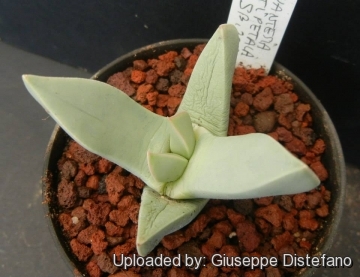 Schwantesia acutipetala Photo by: Giuseppe Distefano
Schwantesia acutipetala Photo by: Giuseppe Distefano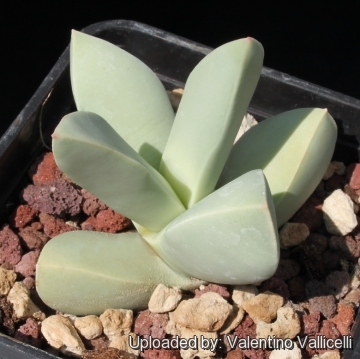 Schwantesia acutipetala Photo by: Valentino Vallicelli
Schwantesia acutipetala Photo by: Valentino Vallicelli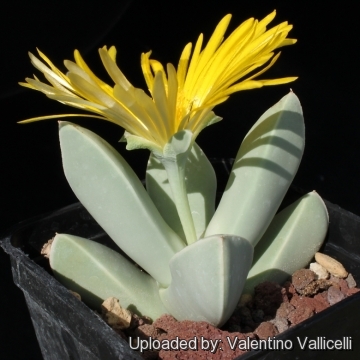 Schwantesia acutipetala Photo by: Valentino Vallicelli
Schwantesia acutipetala Photo by: Valentino Vallicelli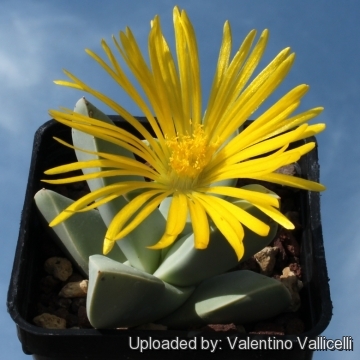 Schwantesia acutipetala Photo by: Valentino Vallicelli
Schwantesia acutipetala Photo by: Valentino Vallicelli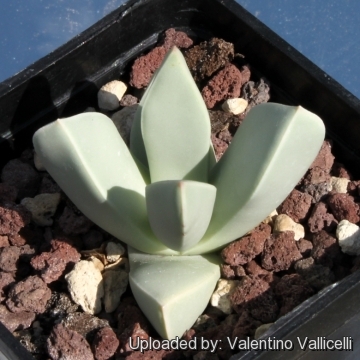 Schwantesia acutipetala Photo by: Valentino Vallicelli
Schwantesia acutipetala Photo by: Valentino Vallicelli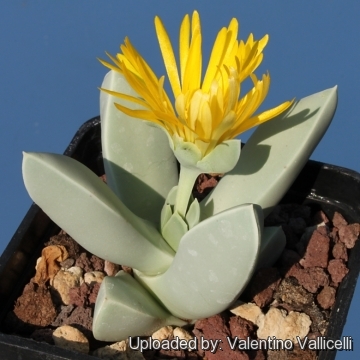 Schwantesia acutipetala Photo by: Valentino Vallicelli
Schwantesia acutipetala Photo by: Valentino Vallicelli Schwantesia acutipetala Photo by: Valentino Vallicelli
Schwantesia acutipetala Photo by: Valentino VallicelliCultivation and Propagation: The Schwantesia is easy to grow. These plants grow in autumn-winter rain areas and head for dormancy in summer.
Growth rate: It is a slow growing species that clusters easily in cultivation, if grown correctly, it will reward the grower with generous displays of tiny flowers.
Soil: Since roots are quite shallow, use a cactus mix or add extra perlite or pumice to regular soil potting soil. A gritty, very free-draining compost is suitable, and clay pots help the plants to dry out between watering. For best results, use a shallow pot, and only use the smallest diameter pot that will accommodate the plant.
Waterings: Requires little water, otherwise its epidermis breaks (resulting in unsightly scars). Regular water in autumn through to spring. Water minimally in summer, only when the plant starts shrivelling but it will generally grow even in summer if given water. No water should ever be allowed to stand around the roots.
Exposure: Keep cool and shaded in summer, needs full sun or light shade in the other seasons. High levels of light are needed in winter to flower and for good plant development.
Fertilization: Need a perfect fertilizer diet during the growing season. Feed them once during the growing season with a fertilizer specifically formulated for cactus and succulents (high potash fertilizer with a dilute low nitrogen), including all micro nutrients and trace elements diluted to ½ the strength recommended on the label. They thrive in poor soils and need a limited supplies of fertilizer to avoid the plants developing excess vegetation, which is easily attacked by fungal diseases. Some growers fertilize frequently, some hardly ever. However, for the highly succulent mesembs, fertilization is not really necessary.
Hardiness: It is quite frost resistant if kept dry, hardy as low as -5° C.
Rot: Rot is only a minor problem with mesembs if the plants are watered and “aired” correctly. If they are not, fungicides won't help all that much. The plant turns immediately to
mush when over watered, or watered out of season. Care must be given in watering, keeping them warm and wet while growing, and cooler and dry when dormant.
Reproduction: Seeds, cuttings or division. Sow them in autumn. Germination usually occurs within about a week or two. Seed germinate at 15-21 °C. Cover the seeds with a very fine layer of grit and water from below with a fungicide to prevent damping off. For the first 3-4 days cover the pots with a sheet of glass/clear perspex to keep the humidity levels high. Remove the glass and replace it with light shadecloth and mist once or twice a day for the next two weeks after which most seeds should have germinated. From then on mistings can be reduced to every second and then every third day as the little plants grow. Take the cuttings from a grown-up mother plant. Each cutting must contain one or more heads along with a fraction of root and permit them to dry out a couple of days, lay the cuttings on the soil and insert the stem end partially into the soil. Try to keep the cutting somewhat upright so that the roots are able to grow downward.


















